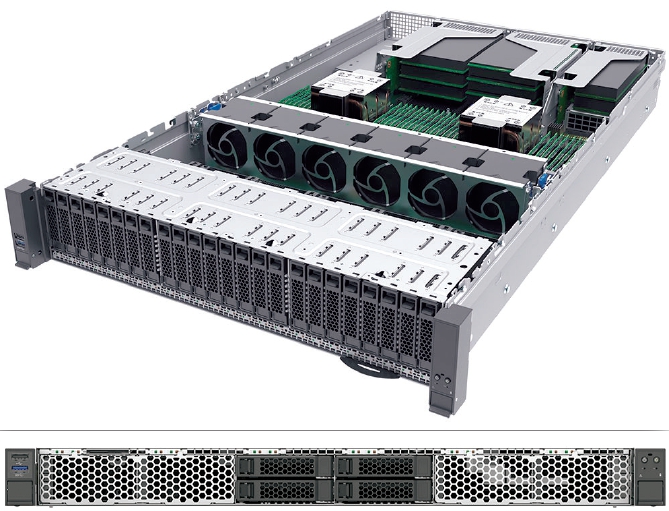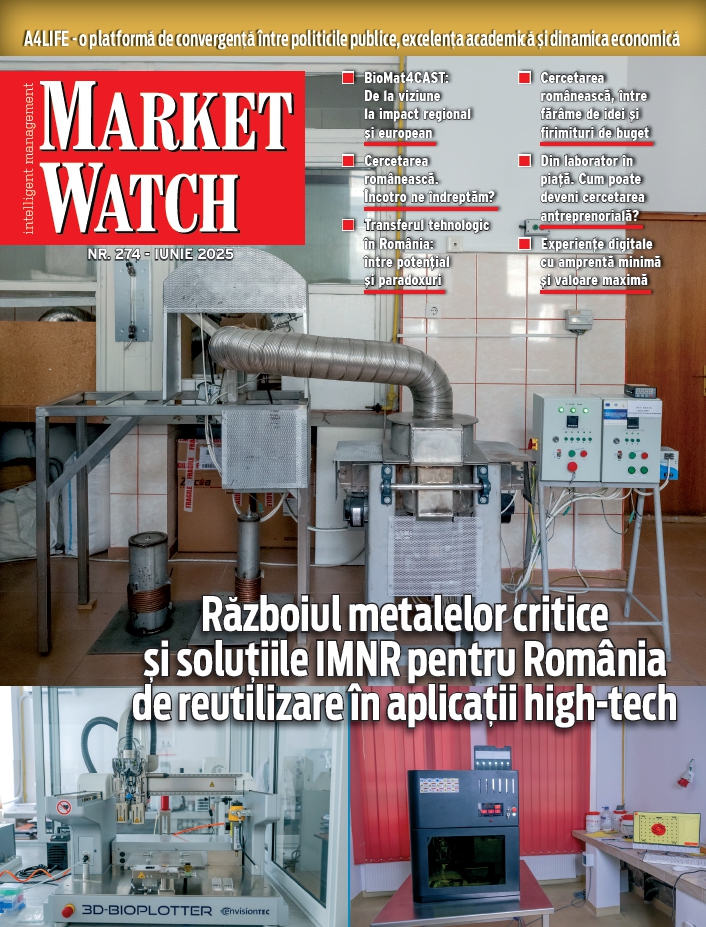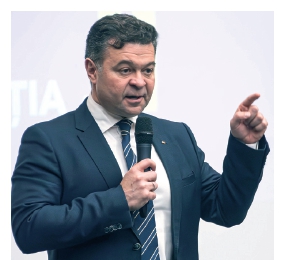Maguay has today all the necessary capabilities to tackle any complex digitalization project in Romania

Maguay, the longest-established Romanian IT&C company, has entered its 33rd year of existence, as a manufacturer of computer systems under its own brand, integrator of reference projects and developer of its own software applications. And in 2025, the "veteran" Maguay aims to perform and leverage its capabilities in the service of transformational digitalization projects for Romanian business, economy and society. Corvin Pughin emphasizes that the company he runs with his brother has reached the necessary technical and managerial maturity that allows him to successfully tackle any type of project, regardless of its complexity or challenges. We discover in this interview the arguments that support this statement and the ways in which one of the few local hardware manufacturers aims to continue to grow, while also supporting Romania s digital development process.
How was the recent year for Maguay and the IT industry in our country?
2024 was a good year for Maguay, with a growth of around 15% compared to the previous year, as 2023 had been the company s best year since its launch. We are going through a favorable period, the company has reached a maturity in terms of technical capabilities, market understanding, partnerships and is able to tackle any type of IT project, regardless of its degree of complexity. Going back to the question, Maguay s growth has come in all its areas of development: computer systems builder, integrator of complex IT systems, software developer. Our main area of growth is as an IT systems integrator, where we have focused all of our capabilities - from hardware and software infrastructure to software application development.
At the level of the local IT market - public sector, there were numerous projects, starting with educational projects and ending with large dedicated national cloud projects, with the main source of funding being the NRRP. Lately there has been a little concern for 2025-2026 with what will happen with the funding coming from the NRRP, but until proven otherwise we remain optimistic. As for the measures that have led to the cancellation of numerous IT incentives and unannounced tax increases, these represent a negative footprint that will obviously be reflected in costs and in the profitability or lack of profitability of companies.
If we look at the evolution of the legislative framework, there have been real improvements in public procurement. We have an obviously increased transparency, through the use of public consultation mechanisms, a stage through which most major projects pass, a stage in which every interested entity can proactively participate, put forward its point of view, propose alternative solutions that can be (and have been in many cases) taken into consideration. In recent years, the filters of our public institutions have also been working very well. In conclusion, the IT industry is moving into the public sector in an obviously improved framework.
2024 was a peak year. What are the expectations for 2025, in a global context in which the world is changing rapidly and many landmarks are being redefined?
The world is clearly changing. We all see and feel what is happening around us. Its effects are not yet even clearly present, but they will not be long in coming in and beyond the borders of IT. The IT area, obviously, is influenced by the technologies that are emerging, the technologies that are being promoted a lot at that time, starting from the much-discussed cloud to artificial intelligence, which we can see is present on every page, in every discussion, being a laitmotiv of IT. It s not the first in history, but this time the impact will be very big.
When it comes to technology, Maguay will remain true to its principles, with the belief in a job well done always at the forefront of everything we do. We continue to always adopt the latest technology - so, yes, we are also present in the Artificial Intelligence (AI) area - we seek to offer optimized, flexible, performing, robust solutions, but at the same time at an optimized cost, if we think about the whole period of use and sustainability of each project. Our vision is not to change what is going well, but to maintain and continuously improve. In fact, Maguay s very path on the Romanian market, started in 1992, is in itself a model of resilience.
We have been through the best of times, economically, but also the worst. We went through an economic crisis, a pandemic, a period of "quarantine" due to a legal situation, all of which we overcame well. We have learned from each victory, but especially from each defeat and, moving forward, we have tried to do good around us through the projects we have developed. We realize that we can t change everything around us, but we want to make a positive footprint and contribute to the common good, to strengthening a culture of doing things well.
In this saga of our development we have also had the advantage of growing as a family company, in which its members share common values and ideals, so the development strategy was quickly adopted by all. Most of people from the company s core have grown up in the company, started from their first job in Maguay and worked their way up to the leadership area. Sharing the same values has made us stronger, hence Maguay s resilience and increased adaptability to the various situations that come our way. 
What about in the longer term? How do you aim to support Romania s digital transformation?
In the long term, we will continue to do everything as best as possible. To contribute fully to the evolution of the local market by bringing new technologies at an optimized cost. In terms of our direct involvement, I believe that the best example of a project relevant to the digitization process in Romania is the Single Digital Portal of Romania - PDURo.
PDURo is a platform developed for the digitization of public administration procedures, representing the implementation of the Digital Government Regulation (SDG) and the principles of OOTS (Once-Only Technical System). It includes a public portal with detailed procedures, interface for citizens, companies and institutions, administration modules for RDAs, reports and interoperability with other local and central public systems. The platform allows the electronic submission of applications and obtaining digital documents for procedures managed by DEPABD, IGI, CNRED, CNPP, ANAF, ANPIS, ANOFM, MMuncii, DRPCIV, CNAIR and other institutions. The digitized services include issuing birth certificates, applying for proof of residence, recognition of diplomas, applications for pension and social benefits, vehicle registration, notification of economic activities and filing tax returns. PDURo improves the accessibility and efficiency of public services, cutting red tape and facilitating the automated exchange of data between institutions. The system complies with European interoperability and security standards and contributes to the modernization of public administration by digitizing essential processes.
From Maguay s point of view, what are the most important public administration projects that are underway and those that should be launched this year? Which of them will you take part in, with an increased chance of actually participating?
A very important project is the eTollRO project at CNAIR, eTollRO, on electronic tolls, where we have submitted a bid together with our traditional partner of late, Vodafone, which is under evaluation. Then there are the educational projects that need to be carried out at national and local level, the digitization of the school environment is extremely important - even the simple use of interactive whiteboards is a significant step towards a much more efficient education process. Also, healthcare projects, the digitalization of hospital activity being also very important!
Of course, the continuity of funding from the NRRP is mandatory for the proper implementation of these projects.
As for the public administration projects that Maguay is implementing, of major importance is the already mentioned PDU.Ro, for RDA. Also worth mentioning is the project at RAR, where we are digitizing the workflows within this institution, from scheduling an inspection to issuing an ID card. Along with our partner Vodafone Romania, we are also implementing projects at ANPIS (National Agency for Payments and Social Inspection) - the management of social benefits, allowances, subsidies and financial aid files, and at the National Environmental Guard - where we are building the application for the management of control activities, including modules for planned and unplanned control, control themes, register of controlled objectives, annual planning and administrative resources. All these projects are based on the Asigno platform developed within the Maguay group. 
The IT industry in Romania had high expectations from the NRRP, especially since the allocation for digitization components is about EUR 6 billion. How did you connect to the specific projects of this program?
We connected by tackling every new project that came up, participating from the market consultation stage through to the tender stage. We have been involved both in equipment delivery projects in the educational area and in projects that involved application development, taking as a starting point solutions that combine technologies from established vendors with applications developed within our group, aiming to optimize both performance and cost.
The way we approached complex projects was through partnerships, and one of our most important partners was and is Vodafone. It s one of our philosophies, which we have applied here: long-term partnerships, both with technology vendors and manufacturers, and with key market players.
You approach public and private sector digitization from an integrated perspective. What role does integration play in how you address customers? How are you trying to gain market share with your solutions and technologies?
The ultimate goal of digitization is to build IT systems, private or public, that are easy to use, consume as little user time as possible and deliver as much information as possible in a secure and stable way. But without interoperability between systems, in general, digitization is not possible. This is where the integration zone starts. On the one hand from the role of the integrator, who must know the systems, have the capability and knowledge to make these transfers, to operationalize these data exchanges. On the other hand, it is essential to understand the point of view of the beneficiary, who must be able to present his requests very coherently and clearly, so as not to end up near the end of the project and find that he needs other data, not specified from the outset. As an integrator, you need to use and master many technologies very well, to have the ability to put them to work together, and any project will not be successful if it is not integrated into the economic and social context of the institution.
You have established yourself in the market by always delivering the latest technology, the fastest, and the products and solutions in the Maguay portfolio are configurable regardless of the size of the customer, according to their needs. On the other hand, you are responding effectively to today s challenges by leveraging the strength of your partnerships with technology generators...

Tags: ITC, Maguay, edge computing, HPC System Builder, IT System Integrator, Software Developer, Data Center solutions, AI solutions
Parerea ta conteaza: 
































 UVT, catalizator al mișcării academice timișorene, își urmează calea spre cunoașterea aprofundată și trecerea către tehnologiile viitorului și ale noilor generațiiUniversitatea de Vest din Timișoara este astăzi cea mai dinamică instituție de învățământ superior din România, o universitate care se...
UVT, catalizator al mișcării academice timișorene, își urmează calea spre cunoașterea aprofundată și trecerea către tehnologiile viitorului și ale noilor generațiiUniversitatea de Vest din Timișoara este astăzi cea mai dinamică instituție de învățământ superior din România, o universitate care se...







 De ce buzunarele noastre s-au săturat să fie solidare cu bugetul de stat
De ce buzunarele noastre s-au săturat să fie solidare cu bugetul de stat